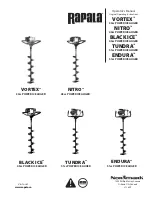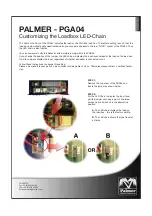
7
Joerns
®
Support Surfaces
DermaFloat
®
APM
• Select the appropriate
Comfort Adjust
level to
prevent bottoming out (i.e., providing greater than
one inch of air between the resident’s sacral area/
buttocks and the lower safety mattress) as outlined
below:
1. Begin by placing the head of the bed in the
appropriate position based on the resident’s
clinical condition.
2. Select the highest or most firm
Comfort Adjust
setting.
3. Hand Check: Place a hand with three (3) fingers
(if head of bed at 30° or higher) or four (4)
fingers (if head of bed lower than 30°) stacked
vertically beneath the cells of the mattress and
above the safety mattress directly between
the lowest point of the resident’s sacral area/
buttocks. The smallest finger should be resting
on the safety mattress.
4. Sequentially reduce the
Comfort Adjust
setting
to the firmness level where the height of the
three (3) or four (4) fingers can slide with
minimal resistance between the resident’s sacral
area/buttocks and the lower safety mattress.
This is the proper
Comfort Adjust
setting for the
resident to assure proper inflation of the air cells
and prevent bottoming out of the mattress.
5. Document the resident’s
Comfort Adjust
setting
for future reference, and re-evaluate with
the Hand Check as the resident’s condition
warrants.
• The CairRails risk management side air bolsters
can be inflated or deflated as required. Locate
the turn valve on the hose assembly between the
mattress and the control unit. Next, inflate/deflate the
CairRails by moving the turn valve to the up (inflate)
or down (deflate) position.
Note:
When inflating or deflating CairRails it is
recommended that the support surface be in
Autofirm
mode.
Operation
Warning:
For important precautions, see page two.
Caution:
The resident’s head should be positioned
in the center of the top section of the mattress. When
using the mattress system always ensure that the
resident is positioned properly within the confines of
the bed. Do not let any extremities protrude over the
side or between the bed rails when the mattress is
being used.
Resident Comfort Controls and
Monitoring (Figure 2)
Power
The
Power
button is used to turn the power on and off.
Standby
The unit starts up in
Standby
. Press the
Power
button
to inflate the mattress. When the
Standby
light is
on, it may also indicate that there has been a power
interruption and the therapy control unit is ready to be
turned back on. Press the
Power
button and reset the
preferred mode of therapy and comfort level.
Modes
Autofirm
Autofirm
mode provides maximum air inflation
designed to assist both residents and caregivers
during resident transfer and treatment. The unit will
automatically return to the mode it was in prior to
Autofirm
(either
Therapy
or
Alternate
) in approximately
10 minutes.
Therapy Modes: Therapy and Alternating
• Therapy
: The unit starts in the
Therapy
mode, which
is the standard low air loss therapy.
• Alternate
: The air cylinders are inflated and deflated
in an A-B-A-B pattern; that ensures the resident is
always supported.
Cycle Times
The
Cycle Time
function is located on the bottom
right of the control panel. Select the frequency of the
alternation of the therapy cells in 5, 10 or 15 minutes
cycles. For more aggressive therapy, choose the five
minute option.
Comfort Adjust
The
Comfort Adjust
function is located in the center
of the control panel. The DermaFloat
®
APM can be
customized to meet individual resident needs within
a therapeutic window. See “Setup” section for more
information. This function will not work in
Autofirm
mode.
Figure 2
































